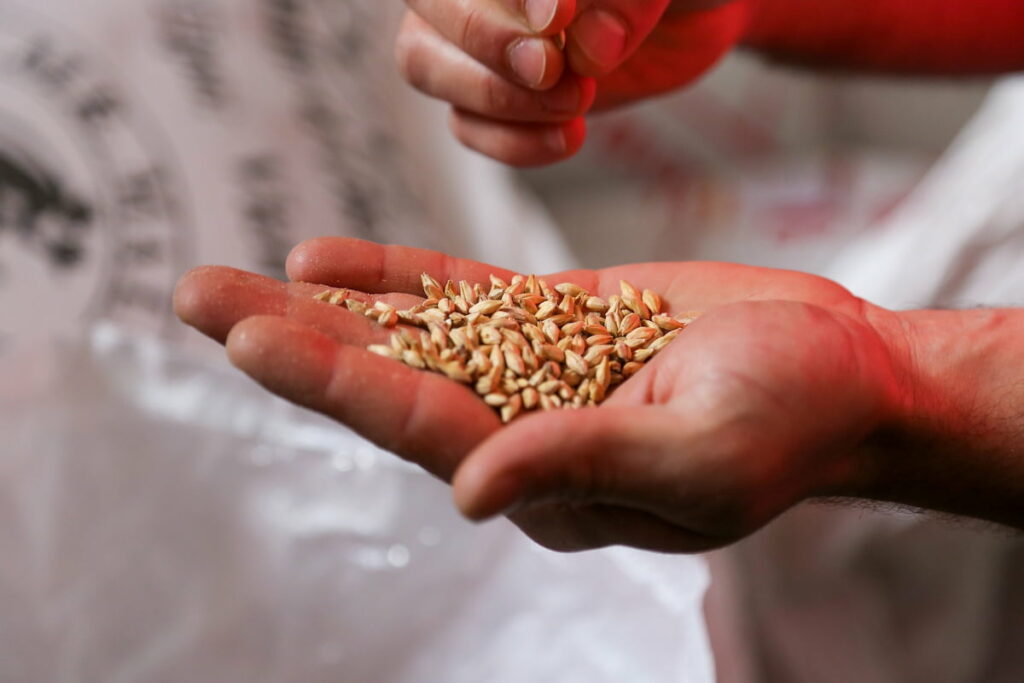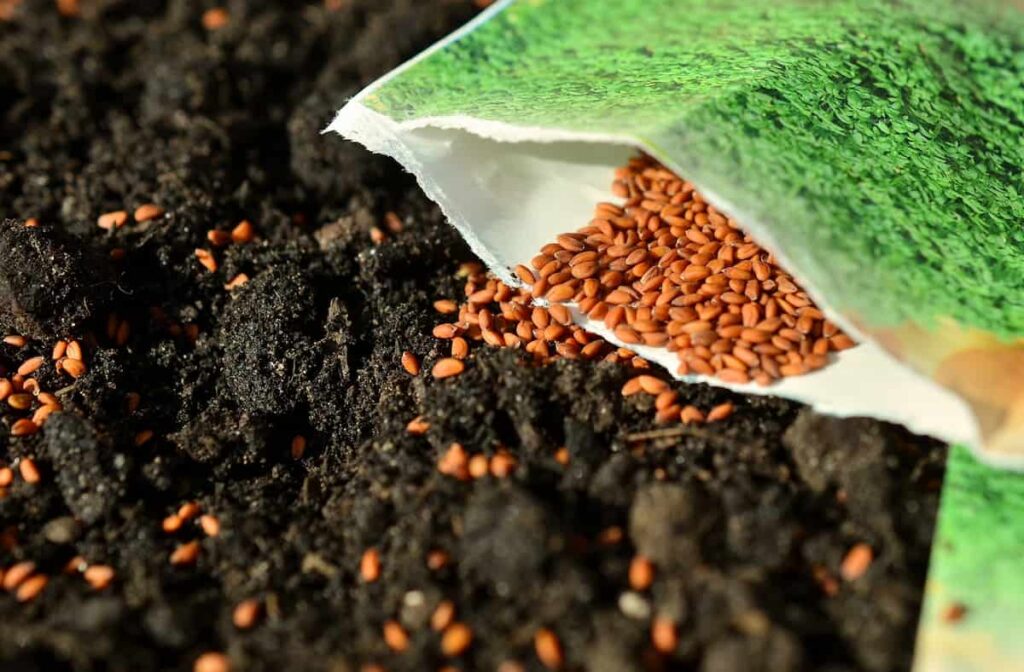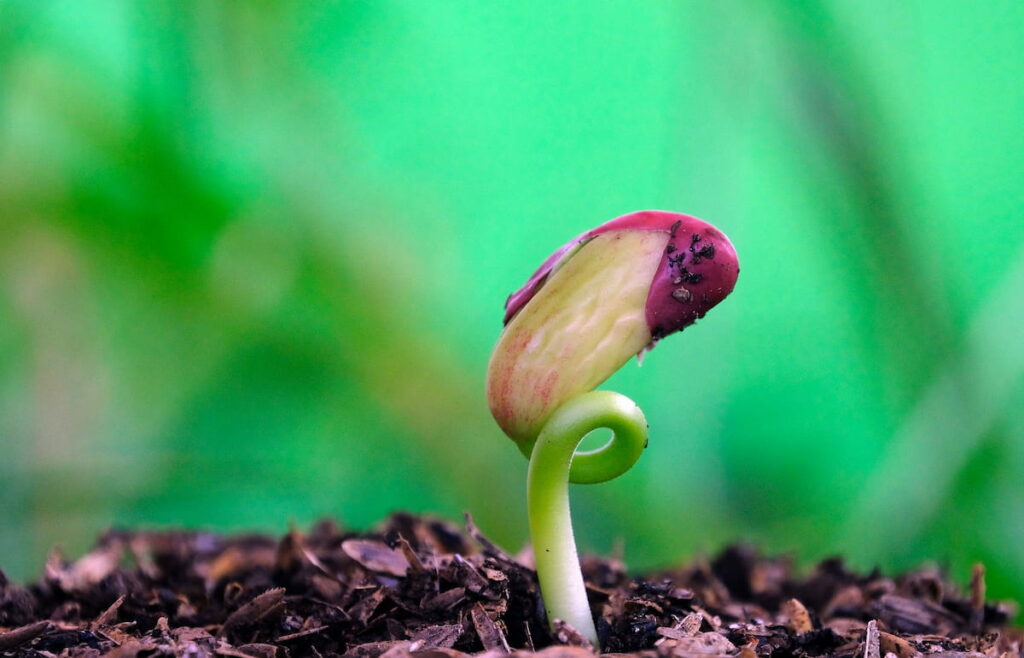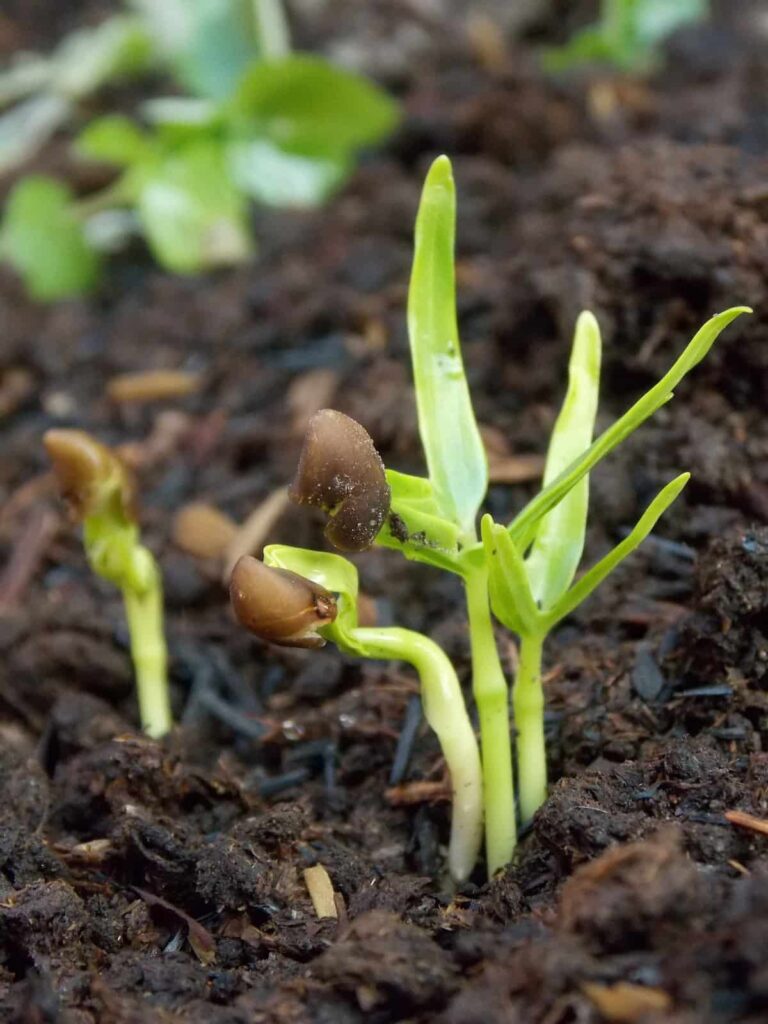Any gardener will tell you that timing is everything. The initial steps toward any successful harvest are usually simple planning and preparation. Garden planting is made easier with the following Vegetable sowing charts. Below we learn about the seed sowing chart for vegetables in the USA, the vegetable sowing and harvest chart for USA vegetables, a sowing guide for different home gardens, and when to harvest different vegetables in the USA.

Seed sowing and harvesting chart for vegetables in the USA
What are the best months for planting vegetables?
Whether you start your seeds inside with heat or outside in the ground, it is crucial to sow and harvest your vegetable harvests at the right time of year, when they are at the peak of tenderness and taste. Sowing season for most vegetables is in the spring (March-May); however, others, like broad beans, may need to be started earlier if the weather is very cold. The harvest season often begins in the middle of the summer.
On the other hand, beans, carrots, radishes, and potatoes should be harvested sooner. Vegetables, including beets, brussels sprouts, cabbages, leeks, and parsnips, are among those that mature later. Vegetables with a longer harvest time may keep producing far into the new year, depending on the weather. Some vegetables need to be started inside to germinate before being transplanted into the garden. This is essential for vegetables like tomatoes, sweet corn, cabbage, and marrow.
What crops are ready for harvest in 30 days?
Radishes are the star when it comes to fast-expanding vegetable gardens. After scattering the seeds among your slow-growing plants, you’ll just have to wait 20 days until you can harvest your radish. Plant in spring, four weeks before your last typical frost. Plant seeds in the garden directly at a depth of 1/2 inch and a spacing of 1 inch. Cut-and-come-again types of lettuce, such as oakleaf and baby leaf, provide for rapid and consistent harvests.
The plant grows quickly and can be harvested repeatedly without diminishing size or yield. From sowing to picking, salad greens typically take around 25 days. The spinach plant is ready for picking in around 30 days. Plant seeds outside six weeks before your area’s last frost date. Cold weather doesn’t bother spinach. Plant rows 15 to 20 inches apart and individual spinach seedlings six inches apart. Plant seeds 1/2 inch deep on moist, well-worked soil that has been amended with compost or other organic materials.
In case you missed it: How to Grow Kohlrabi in USA: Soil, Propagation, Planting, Care, and Farming Tips

Planting spring onions is easy, so you can just sit back and wait for the crop. In most cases, after a seed has been planted, very little maintenance is required. Planting towards the end of winter will result in an early crop. After 30 days, the top leaves of spring onions are ready to be picked. It usually takes about 60 days for the white area at the bottom to fully mature. Arugula sometimes called the rocket, can withstand light and cold and will likely spread itself once it has been planted. Quickly germinating in just 3–4 days, seeds can be harvested in 30 days after sowing.
Turnip greens are a fast-growing plant that needs fewer than 30 days to mature. It’s essential to give them lots of water. They can grow in tight quarters without any problems, and this prevents the turnip’s roots from growing into a bulb. That works out well since we just need the vegetables. Plant seeds in rows 1/2 inch deep and 2 inches wide in the spring and autumn in warmer regions. The separation between rows should be at least 12 inches. Get rid of the leaves as soon as they appear to prevent further root development.
What vegetables can be planted in March?
Seeds for several cool-season vegetables, including broad (or fava) beans, one of the hardiest crops, can be sown as early as March, provided the beds are well prepared. Beetroot, kale, leek, broccoli, horseradish, chicory, and turnip seeds can also be planted. Spinach, peas, shallots, and parsnips are all excellent early veggies to plant in March. In March, herbs such as dill, chives, and coriander can be sown in the ground or in containers.
In March, you can start sowing various vegetables inside (or in a greenhouse), including cauliflower, brussels sprouts, spinach, squash, perennial herbs, chili peppers, sweet peppers, and celery. You can plant tomatoes, cucumbers, and gherkin seeds in a greenhouse. If you start your seeds inside and in a greenhouse in March, you can transplant them outside in as little as four to six weeks or by early to mid-May. After preparing the soil, you can plant artichoke tubers, shallots, garlic sets, and rhubarb crowns.
What is the harvest time for vegetables?
Most veggies are at their most soft and flavorful when picked when they are about half-grown. Late summer/early autumn crops can be harvested for days or weeks. If you can’t eat these crops quickly, you can typically preserve them for use in the early winter. Ultimately, it’s up to your taste buds and experiences to tell you when a harvest is most delicious and soft. Cucumbers are passed their prime for culinary use when they become pale yellow and develop seeds.
In case you missed it: How to Grow Okra in USA: Soil, Propagation, Planting, Care, and Farming Tips

Tomatoes and peppers are just two examples of fruits and vegetables that change color as they develop. To determine when to harvest the crops on this list, go to the seed packets or read the descriptions provided. Produce ready to be harvested usually has a glossy, shiny appearance. If the crop’s skin is dull, it can be beyond its time for harvesting. When most veggies have reached an eatable size, it is time to harvest them. Try biting into a vegetable to see how delicate and flavorful it is.
How do you know it’s time to harvest?
Knowing the typical blooming period for your strain might help you choose when to harvest. Read the reviews of other growers who have harvested the same strain as you for insight into the optimal time to harvest. Your female plants’ pistils are the reproductive structures you see on the buds. It’s as though there were small protruding hairs there. The good news is that these pistils change color as your buds develop and ripen.
When first born, they are a pale white, but as time passes, they gradually darken until they seem brown. The ideal time to harvest can be pinpointed using the tried-and-true pistil technique, which gardeners have relied on for decades. You can tell what kind of plant you have just by glancing at the pistils. The stalked glandular trichomes, also known as the resin glands, are the most dependable indicator that your plants are ready to be harvested.
Trichomes resemble crystals or give well-grown buds a frosted appearance. As the trichomes mature, they become a different hue. They begin as a transparent, clear color but gradually take on a translucent, milky white appearance before settling on an amber hue. Trichomes that are easy to see: Hold on a second Trichomes, which can be either milky white or a golden color: All amber trichomes indicate that the plant is beyond its prime and ready for harvest.
What are fall harvest vegetables?
Good autumn crops include kale, spinach, mustard greens, sorrel, arugula, cress, and leaf lettuce. Vegetables such as carrots, radishes, beets, and turnips also do well as autumn harvest crops. These plants are ideal for late summer and early fall direct sowing in the garden. Fall harvest vegetables, including summer cabbage, Brussels sprouts, Florence fennel, cauliflower, escarole, broccoli, endive, and collard greens, should be started inside and put into the garden once they are ready.
In case you missed it: How to Grow Eggplant in USA: Soil, Propagation, Planting, Care, and Farming Tips

Plant the seeds inside in early summer and move the seedlings to the garden mid to late summer. Sowing cool-weather crops in the summer for harvest in the autumn often yields better results than spring planting. Planting a garden in mid to late summer is excellent since the soil is already warm. Transplants also have a better chance of survival and early growth during the warmer months. Most cold-season crops grow best in relatively low temperatures, but those sown in the spring sometimes ripen just as the weather starts to warm up.
When should I harvest my onions?
Onion harvesting is simple and uniform across all varieties of globe onions. When the bulbs have reached their full size in the middle of summer, you can start picking off individual onions as you need them. Your onion plants’ leaves will begin to droop in late summer or early autumn. This occurs at the onion’s “neck,” indicating that the plant has finished growing and is now suitable for storage. Soon after, you can gather onions for harvest.
Ideal weather would be warm (between 75 and 80 degrees F), dry, and windy. Onions lose their necks, and their papery skins constrict around the bulbs as they cure. Cut the roots from the bottom of each bulb with scissors after the necks are taut and dry and the stems contain no moisture. Trimming the leaves to within one ′′ of the bulb is also an option. Remove onions that have green necks or bulbs that are bruised or broken. The onions should be brought inside and stored in mesh bags, a bushel basket, and a flat cardboard box with some holes cut in it.
How many seeds should I plant for each vegetable?
A typical rule of thumb is to sow two or three seeds per hole. Not every seed you plant will grow since the germination rate of seeds is not 100%. You can increase the likelihood that the desired number of seedlings will germinate and flourish by overseeding holes, cells, or pots. Let’s discuss a practical example to illustrate why overseeding is crucial.
In case you missed it: How to Grow Chard in the USA: Soil, Propagation, Planting, Care, and Farming Tips

So, here’s the deal: This year, let’s assume you’ve decided to grow six tomato plants from seed in your yard. Anything fewer than six plants is not enough to satisfy your gardening needs. This illustration is applicable regardless of whether you are starting your seeds inside in cells, in pots, in containers, or on the ground outdoors. Germination rates of seeds vary. One seed per cell in a six-cell starting tray for tomatoes could only result in four plants sprouting. However, the odds of generating at least six plants improve if you sow more than one seed in each cell.
How many seeds do I plant for tomatoes?
Tomato seeds can be planted in just about any tiny container, such as a yogurt cup, egg carton, or seed beginning tray, as long as there is enough drainage. Use a seed starting mix and plant two or three seeds in each container or cell to promote rapid root development. Add water to the potting mix until it reaches the consistency of a wrung-out sponge, and then fill your pots. Plant seeds about an eighth of an inch deep, then gently tamp the soil to ensure good contact.
Your seeds should be stored in a cool, dark place with temperatures between 70 and 80 degrees Fahrenheit, and the plastic wrap should just lightly cover them. Within a week to two, you should see your seeds begin to sprout and be ready to be transferred to a sunny location or under artificial lighting. When the plants’ first true leaves develop, you should repot them into a bigger container, such as a 16-ounce plastic cup with holes punched in the bottom.
What seeds can I plant now for spring?
You can sow the seeds outside in your garden: kohlrabi, collards, kale, radishes, spinach, Chinese kale, peas, onions, lettuce, turnips, and a variety of cruciferous greens. Growing peppers inside begins 8–10 weeks before they can be transplanted outdoors. The best indoor environment for these plants would be a greenhouse.
In case you missed it: USA Soil pH Chart: Ideal and Optimum Range for Vegetables, Fruits, Flowers, and Herbs

Adding compost to the soil in the autumn is a great way to prepare it for planting. The rule of thumb of the green thumb is two inches of organic materials worked into six inches of soil. When sufficient organic matter is in the soil, plants easily draw oxygen, water, and nutrients to their root systems. Plant development can be stunted if more organic matter is added to a smaller soil volume. Plants can’t thrive in too heavy and moist soil and don’t have enough room for drainage and air.
The best seedbed can be created at any time of year, but even if you’re beginning in the spring, it’s still a good idea to dig the soil and mix in organic matter and fertilizer. Use only genuine composted organic material to ensure a healthy and ready-to-grow root zone if you want to add green matter (grass clippings, bark, etc.) into your soil, gather it in the summer, and mix it in throughout the autumn. Create a compost pile to store your organic waste in for later use.
Seed sowing and harvesting chart for vegetables in the USA
| Vegetables | Planting type | Days to the first harvest | Depth of planting (in) | Spacing within a row (in) | Spacing between rows (in) |
| Asparagus | Perennial: Crowns | 2nd Season | 8 | 18 | 48 |
| Asparagus | Seed: Transplant | 4th Season | 1 | 3 | 6 |
| Rhubarb | Perennial: Crowns | 2nd Season | 1 | 36 | 35–48 |
| Beans, Snap | Seeded | 50–60 | 2 | 3–4 | 36 |
| Beans, Lima | Seeded | 65–75 | 2 | 4–8 | 36 |
| Beets | Seeded | 55 –65 | 1⁄2 | 2–4 | 18 |
| Broccoli | Transplant | 60–80 | 1⁄2 | 18–24 | 36 |
| Brussels Sprouts | Transplant | 85–95 | 1⁄2 | 12–18 | 36 |
| Cabbage | Transplant | 65–80 | 1⁄2 | 12-18 | 36 |
| Chinese Cabbage | Seeded | 80–90 | 1⁄2 | 10–12 | 18 |
| Cauliflower | Transplant | 85–100 | 1⁄2 | 18–24 | 36 |
| Cucumbers | Seed or Plants | 60–65 | 1⁄2-1 | 24 | 36–72 |
| Eggplant | Transplants | 75–90 | 1/2 | 18–24 | 36 |
| Garlic | Sets | 140–160 | 1 | 4–6 | 18–36 |
| Horseradish | Roots | Fall | 3–4 | 12–18 | 36 |
| Kale | Seeded | 60–90 | 1⁄2 | 12 | 36 |
| Kohlrabi | Seed or Transplant | 60–75 | 6–8 | 5–6 | 18–24 |
| Lettuce, Seed | Seeded | 45–50 | 1⁄4 | 2–4 | 18–24 |
| Lettuce, Plants | Transplants | 10–20 | 1⁄4 | 6-12 | 18–24 |
| Lettuce, Head | Transplants | 35–45 | 1⁄2 | 12–15 | 18–24 |
| Mustard | Seeded | 50–60 | 1⁄2 | 2–4 | 12-18 |
| Onion, Sets | Sets | 100–120 | 1 1⁄2 –2 | 3–4 | 12–24 |
| Onion, Plants | Transplants | 100–120 | 1 1⁄2 –2 | 3–5 | 12–24 |
| Okra | Seeded | 50–60 | 1⁄2 | 18–24 | 36 |
| Parsley | Seeded | 60–70 | 1⁄2 | 2–4 | 12-18 |
| Parsnip | Seeded | Fall | 1⁄4–1⁄2 | 3–4 | 18–24 |
| Peas | Seeded | 60–80 | 2 | 1–2 | 18–24 |
| Peppers | Transplants | 65–80 | 1/2 | 18–24 | 36 |
| Potatoes | Tuber Pieces | 70–90 | 2–3 | 8–12 | 36 |
| Radish | Seeded | 25–30 | 1/2 | 2–3 | 12–18 |
| Rutabaga | Seeded | 90–120 | 1/2 | 4–6 | 18–24 |
| Salsify | Seeded | 140–150 | 1/2 | 2–3 | 12–18 |
| Spinach | Seeded | 40–45 | 1 | 2–3 | 12–18 |
| Squash, Summer | Seeded | 50–55 | 1 | 18-24 | 48–72 |
| Squash, Winter | Seeded | 50–55 | 1 | 24-36 | 96 |
| Sweet Corn | Seeded | 80–100 | 2 | 9-12 | 36 |
| Sweet Potatoes | Plants | 130–140 | 1/2 | 12–18 | 36–48 |
| Swiss Chard | Seeded | 50–60 | 1/2 | 6–8 | 18–24 |
| Tomato | Transplants | 70–85 | 1 | 24–48 | 36–48 |
| Turnips | Seeded | 45–65 | 1/2 | 3–4 | 12–18 |
Conclusion
A second planting (or “succession”) can be done in certain locations. Zones 7–10 offer warmer climates and potentially two growing seasons each year, giving you more time to plant your favorite veggies. You can have a summer crop of peppers and tomatoes in many states if you plant them in February and a winter crop if you plant them again in early October.
- Types of Pesticides Used in Agriculture: A Beginner’s Guide
- Economical Aquaculture: A Guide to Low-Budget Fish Farming
- 15 Common Planting Errors That Can Doom Your Fruit Trees
- How to Make Houseplants Bushy: Effective Tips and Ideas
- Innovative Strategies for Boosting Coconut Pollination and Yield
- Pollination Strategies for Maximum Pumpkin Yield
- The Complete Guide to Chicken Fattening: Strategies for Maximum Growth
- Natural Solutions for Tulip Problems: 100% Effective Remedies for Leaf and Bulb-Related Issues
- Revolutionizing Citrus Preservation: Towards a Healthier, Greener Future
- Natural Solutions for Peony Leaf and Flower Problems: 100% Effective Remedies
- Maximizing Profits with Avocado Contract Farming in India: A Comprehensive Guide
- Natural Solutions for Hydrangea Problems: 100% Effective Remedies for Leaf and Flowers
- The Ultimate Guide to Choosing the Perfect Foliage Friend: Bringing Life Indoors
- From Sunlight to Sustainability: 15 Ways to Use Solar Technology in Agriculture
- The Ultimate Guide to Dong Tao Chicken: Exploring from History to Raising
- The Eco-Friendly Makeover: How to Convert Your Unused Swimming Pool into a Fish Pond
- Mastering the Art of Delaware Chicken Farming: Essentials for Healthy Backyard Flocks
- 20 Best Homemade Fertilizers for Money Plant: DIY Recipes and Application Methods
- How to Craft a Comprehensive Free-Range Chicken Farming Business Plan
- Brighten Your Flock: Raising Easter Egger Chickens for Beauty and Bounty
- How to Optimize Your Poultry Egg Farm Business Plan with These Strategies
- Subsidy for Spirulina Cultivation: How Indian Government Schemes Encouraging Spirulina Farmers
- Ultimate Guide to Raising Dominique Chickens: Breeding, Feeding, Egg-Production, and Care
- Mastering the Art of Raising Jersey Giant Chickens: Care, Feeding, and More
- Ultimate Guide to Raising Legbar Chickens: Breeding, Farming Practices, Diet, Egg-Production
- How to Raise Welsummer Chickens: A Comprehensive Guide for Beginners
- How to Protect Indoor Plants in Winter: A Comprehensive Guide
- Ultimate Guide to Grow Bag Gardening: Tips, Tricks, and Planting Ideas for Urban Gardeners
- Guide to Lotus Cultivation: How to Propagate, Plant, Grow, Care, Cost, and Profit
- Agriculture Drone Subsidy Scheme: Government Kisan Subsidy, License, and How to Apply Online
- Ultimate Guide to Raising Araucana Chickens: Breed Profile, Farming Economics, Diet, and Care
- Bringing Hydroponics to Classroom: Importance, Benefits of Learning for School Students
- Ultimate Guide to Raising Polish Chickens: Breed Profile, Farming Economics, Diet, and Care
- Ultimate Guide to Raising Australorp Chickens: Profile, Farming Economics, Egg Production, Diet, and Care
- Silkie Chicken Farming: Raising Practices, Varieties, Egg Production, Diet, and Care
- Sussex Chicken Farming: Raising Practices, Varieties, Egg Production, Diet and Care